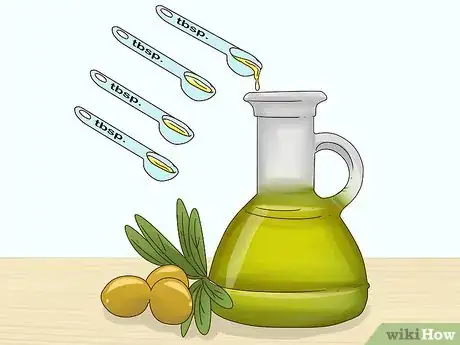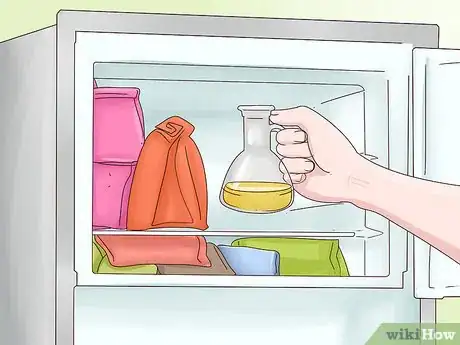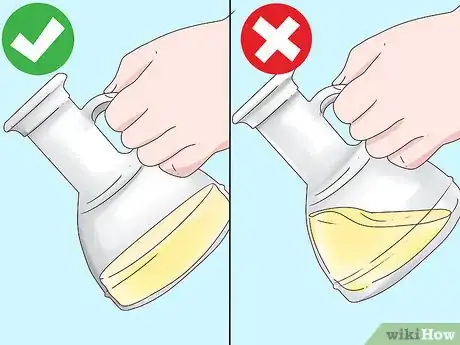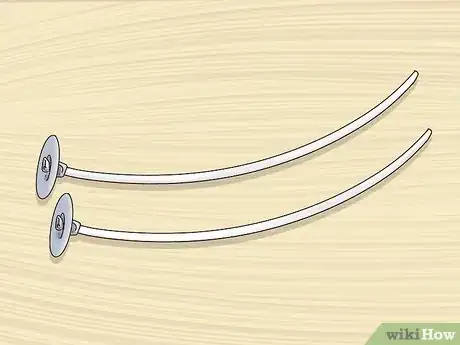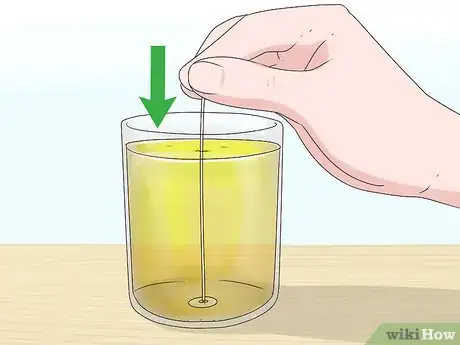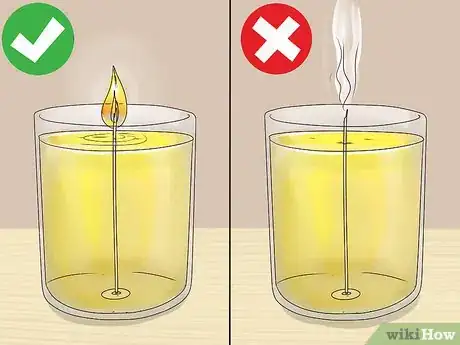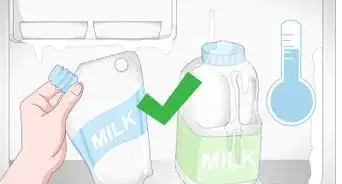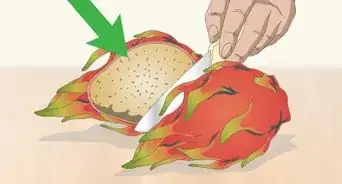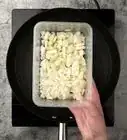This article was co-authored by wikiHow Staff. Our trained team of editors and researchers validate articles for accuracy and comprehensiveness. wikiHow's Content Management Team carefully monitors the work from our editorial staff to ensure that each article is backed by trusted research and meets our high quality standards.
This article has been viewed 28,589 times.
Learn more...
If you’re unsure whether a certain brand of olive oil really is pure, there are a few ways of figuring it out. Unfortunately, lots of brands of olive oil are often tempered with. It's common to find olive oils that are diluted with lighter, cheaper oils. [1] Luckily, there are ways of testing the purity of olive oil that are actually much simpler than you'd think.
Steps
Conducting the Fridge Test
-
1Pour 2 to 4 tablespoons of olive oil in a glass jar. Make sure you’re using a very clean jar, as you won’t want anything to mess with the test. Then go ahead and seal the jar shut.
-
2Put the jar in your fridge for 24 hours. This gives the olive oil enough time to solidify. You'll want to leave your olive oil as uninterrupted as possible, so avoid moving it around by placing it in a back corner of your fridge.Advertisement
-
3Check to see if the oil is solid or liquid. After the 24 hours has passed, you should be able to tell which state the olive oil is in. At this point you can take it out of the fridge.
Trying the Oil Lamp Test
-
1Coat a wick in olive oil. Olive oil should be able to keep a wick lit if it is indeed extra-virgin. A pure olive oil should also burn smokeless.[4]
- You may want to do this outside in anticipation of possible smoke.
-
2Put the wick in a glass container. This test is better and safer when done in a container rather than holding the wick in your hand. The more shallow the container is the better you’ll be able to light the wick.[5]
- Use flame retardant gloves as well. Take care not to burn yourself.
-
3Light the wick on fire. If the wick doesn’t remain on fire then you'll know that you're using fake olive oil. If the wick is lit but it’s also producing smoke, you can assume that it's fake olive oil.[6]
References
- ↑ https://dontwastethecrumbs.com/2013/04/how-pure-is-your-olive-oil-a-two-step-test/
- ↑ https://dontwastethecrumbs.com/2013/04/how-pure-is-your-olive-oil-a-two-step-test/
- ↑ https://dontwastethecrumbs.com/2013/04/how-pure-is-your-olive-oil-a-two-step-test/
- ↑ http://www.dvo.com/newsletter/weekly/2013/12-27-223/cooknart3.html
- ↑ >https://farmingmybackyard.com/olive-oil-lamps/
- ↑ https://www.foodrenegade.com/how-tell-if-your-olive-oil-fake/
- ↑ https://www.epicurious.com/ingredients/seven-ways-to-tell-the-difference-between-real-and-fake-olive-oil-article
- ↑ https://www.epicurious.com/ingredients/seven-ways-to-tell-the-difference-between-real-and-fake-olive-oil-article
- ↑ http://www.enotecapontevecchio.com/enoteca/p/98/165
